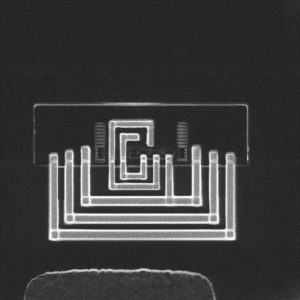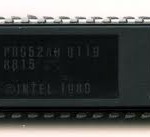Extract IC PIC18F4553 Program
Extract IC PIC18F4553 Program and data from its flash and eeprom memory separately, the status of the Microcontroller will be reset from locked to unlocked one and copy the firmware to new MCU PIC18F4553;

Extract IC PIC18F4553 Program and data from its flash and eeprom memory separately, the status of the Microcontroller will be reset from locked to unlocked one and copy the firmware to new MCU PIC18F4553
The selection of the automatic acquisition time and A/D conversion clock is determined in part by the clock source and frequency while in a power-managed mode.
If the A/D is expected to operate while the device is in a power-managed mode, the ADCS2:ADCS0 bits in ADCON2 should be updated in accordance with the clock source to be used. The ACQT2:ACQT0 bits do not need to be adjusted as the ADCS2:ADCS0 bits adjust the TAD time for the new clock speed.
After entering the mode, an A/D acquisition or conversion may be started. Once started, the device should continue to be clocked by the same clock source until the conversion has been completed to facilitate the process of Microcontroller program copying.
If desired, the device may be placed into the corresponding Idle mode during the conversion. If the device clock frequency is less than 1 MHz, the A/D RC clock source should be selected.
Operation in Sleep mode requires the A/D FRC clock to be selected. If bits ACQT2:ACQT0 are set to ‘000’ and a conversion is started, the conversion will be delayed one instruction cycle to allow execution of the SLEEP instruction and entry to Sleep mode.
The IDLEN bit (OSCCON<7>) must have already been cleared prior to starting the conversion. The ADCON1, TRISA, TRISB and TRISE registers all configure the A/D port pins. The port pins needed as analog inputs must have their corresponding TRIS bits set (input).
If the TRIS bit is cleared (output), the digital output level (VOH or VOL) will be converted. The A/D operation is independent of the state of the CHS3:CHS0 bits and the TRIS bits.
Figure 2-4 shows the operation of the A/D Converter after the GO/DONE bit has been set and the ACQT2:ACQT0 bits are cleared. A conversion is started after the following instruction to allow entry into Sleep mode before the conversion begins.
Figure 2-5 shows the operation of the A/D Converter after the GO/DONE bit has been set and the ACQT2:ACQT0 bits are set to ‘010’, and selecting a TAD acquisition time before the conversion starts. Clearing the GO/DONE bit during a conversion will abort the current conversion in order to unlock microcontroller chip. The A/D Result register pair will NOT be updated with the partially completed A/D conversion sample.
This means the ADRESH:ADRESL registers will continue to contain the value of the last completed conversion (or the last value written to the ADRESH:ADRESL registers). After the A/D conversion is completed or aborted, a 2 TCY wait is required before the next acquisition can be started. After this wait, acquisition on the selected channel is automatically started.
The discharge phase is used to initialize the value of the holding capacitor. The array is discharged before every sample. This feature helps to optimize the unity gain amplifier, as the circuit always needs to charge the capacitor array, rather than charge/discharge based on previous measure values.
An A/D conversion can be started by the Special Event Trigger of the CCP2 module. This requires that the CCP2M3:CCP2M0 bits (CCP2CON<3:0>) be programmed as ‘1011’ and that the A/D module is enabled (ADO N bit is set). When the trigger occurs, the GO/DONE bit will be set, starting the A/D acquisition and conversion, and the Timer1 (or Timer3) counter will be reset to zero. Timer1 (or Timer3) is reset to automatically repeat the A/D acquisition period with minimal software overhead (firmware must move ADRESH:ADRESL to the desired location).
The appropriate analog input channel must be selected and the minimum acquisition period is either timed by the user, or an appropriate TACQ time selected before the Special Event Trigger sets the GO/DONE bit (starts a conversion).
If the A/D module is not enabled (ADON is cleared), the Special Event Trigger will be ignored by the A/D module, but will still reset the Timer1 (or Timer3) counter.
Tags: extract ic encrypted archive,extract ic encrypted code,extract ic encrypted content,extract ic encrypted data,extract ic encrypted eeprom,extract ic encrypted file,extract ic encrypted firmware,extract ic encrypted information,extract ic encrypted memory,extract ic encrypted program


